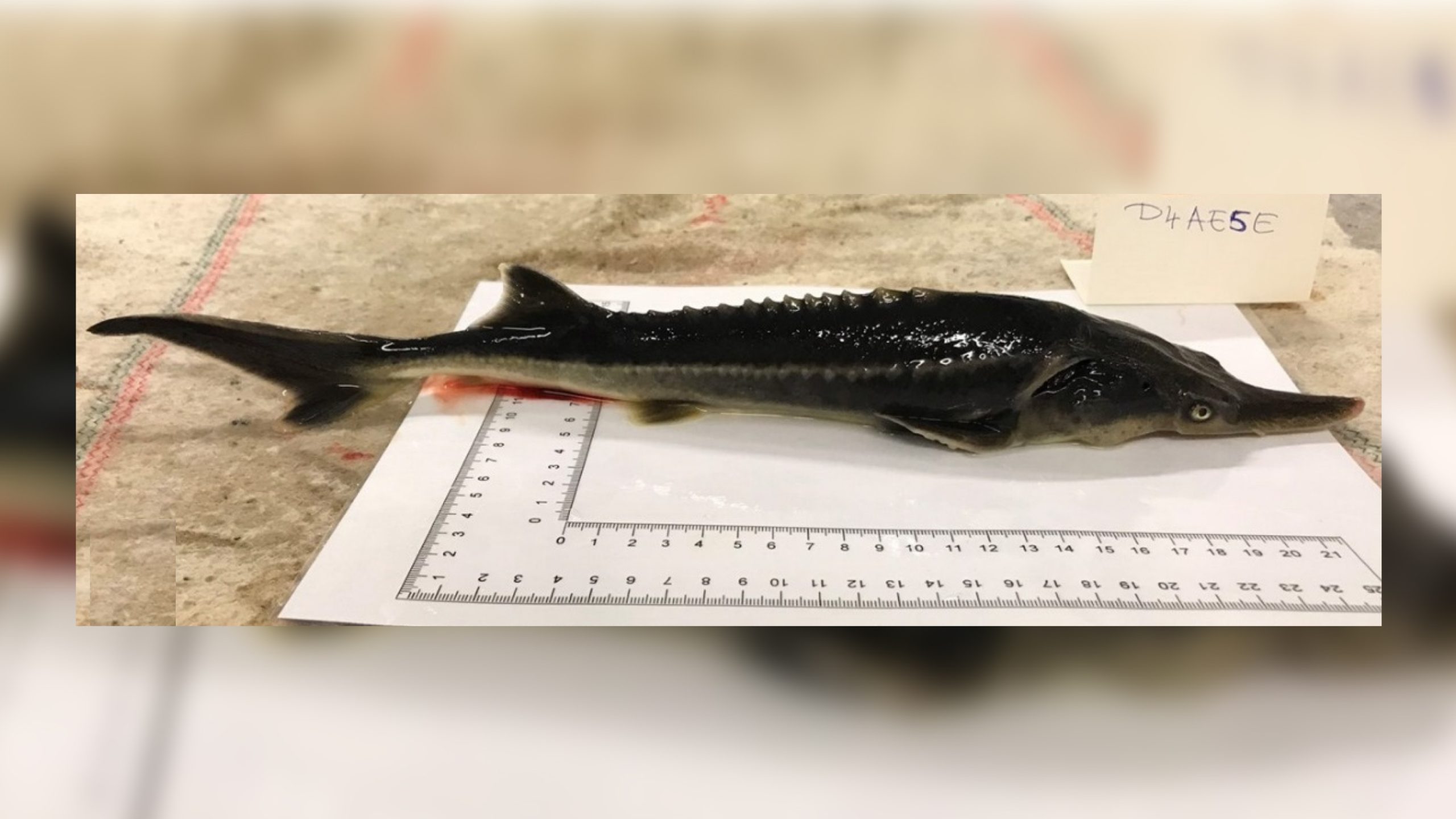Hungarian scientists were trying to get the sturgeon into reproducing asexually. This is done by using sperm from an incompatible fish species to ‘trick the egg’, they used an American paddlefish as they have no wild link to Russian sturgeon, this should have made them genetically incompatible but the egg was fertilised.
A bizarre new type of fish called a ‘sturddlefish’ that is a cross between a Russian sturgeon and American paddlefish has been created by scientists in a lab.
A team from the Research Institute for Fisheries and Aquaculture, Hungary, were using paddlefish sperm to try to coax eggs from the endangered sturgeon into reproducing asexually, in a process called gynogenesis.
They chose American paddlefish sperm because they assumed the two species would be unable to reproduce, due to the fact they have never come into contact with one another, and the gynogenesis process requires the ‘sperm but not its DNA’.
However, despite the closest common ancestor of the two fish dating back 184 million years, DNA from the paddlefish managed to fertilise the sturgeon eggs.
Researchers said the resulting fish are infertile, like many hybrid species, and they have no plans to produce anymore – but the survivors could live for over 100 years.
Russian sturgeons feed on the floor of seas, lakes and rivers in eastern Europe, Siberia and the Middle East but aren’t found in the US at all.
In contrast the American paddlefish are found in the rivers of the US and not in eastern Europe, Siberia and the Middle East. The two have never mixed.
Despite this, a new species of sturddlefish – from a female sturgeon and male paddlefish – has been created in a lab ‘accidentally’ despite researchers predicting it would be impossible for the two to produce offspring.
The team say this could be due to the fact they are both ‘living fossil’ species, that is that they have changed very little since their last common ancestor was alive.
‘These phenomena could lead to a higher similarity, compatibility, and flexibility among the sturgeon genomes,’ the authors wrote in their paper published in Genes.
Adding that it could ‘allow the hybridisation between Russian sturgeon and American paddlefish despite the large geographical, physiological, and morphological distances.’
This is a significant discovery as other ‘blending’ of distant species from similar families to these two have failed to reproduce.
Researchers say their offspring look even weirder than their parent species – with some half-resembling their mother, half their father and some like both.
Some bear classic sturgeon fins and snouts with the typical paddlefish mouth.
‘I did a double-take when I saw it,’ aquatic ecologist Solomon David told The New York Times.
‘I just didn’t believe it. I thought, hybridisation between sturgeon and paddlefish? There’s no way.’
Sturgeons and paddlefish do share some things in common. They are among the largest, longest -living and slowest-growing freshwater fish species
They are also both critically endangered due to habitat loss, overfishing and pollution taking their toll on both species over the last century.
Attila Mozsar and colleagues in Hungary were trying to find a way to breed both fish in captivity by inducing gynogenesis – a form of asexual reproduction.
This works by requiring the presence of sperm to trick the egg into fertilising itself but only works if there is no compatible DNA contained in the sperm.
‘We never wanted to play around with hybridization. It was absolutely unintentional,’ said Dr. Mozsár.
The unexpected fertilisation resulted in hundreds of hybrid fish emerging from the eggs, and the team say two-thirds of them survived.
This suggests the two species are more alike than previously thought – despite never having mixed and being separated by thousands of miles of ocean.
This is likely due to the extremely slow evolutionary rate of the fish species – so while they evolved independently, they hold many features of their last common ancestor that existed during the time of the dinosaurs 184 million years ago.
The team say the fish were likely sterile and so wouldn’t not be able to go on to further reproduce and they had no plans to create any more of the hybrid species.
They said they’d continue to study the way sturgeon and paddlefish and the way they reproduce in the hope of saving them from the brink of extinction.
Both fish are listed as seriously endangered with the Chinese paddlefish going extinct earlier this year and sturgeon ‘more endangered than any other group’.
The study was published in the journal Genes.
DAILY POST UK
